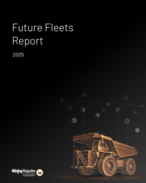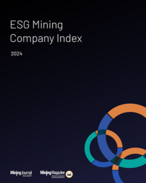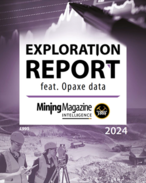This article is 16 years old. Images might not display.
Published in June 2008 Australian Longwall Magazine
Gas emissions in Australian coal mines have increased significantly in recent years as mines reach greater depths and increase longwall production levels and panel sizes.
Traditionally, the main objective of gas drainage operations was to meet the safety requirements of the underground coal mines with respect to outburst and frictional ignition.
Today improved gas capture has become one of the critical greenhouse gas mitigation strategies.
The technique of surface-to-inseam drainage (SIS), also known as Medium Radius Drilling (MRD) technology, offers the most promising alternative to Conventional InSeam drilling (CIS) to meet these challenges.
Studies by CSIRO have identified the major parameters affecting MRD performance in the Bowen Basin as a result of a two-year ACARP-funded study into MRD techniques.
The configuration for a basic MRD hole is one lateral well drilled from the surface down into the target coal seam. This lateral well is drilled to intersect a single vertical well from which water and gas are removed.
The positioning of the wells with respect to gateroads and longwall panels depends on the reservoir characteristics and the lead time available to drain the gas from the longwall panel to the required level. Widely spaced MRD wells installed with a longer lead time allow more gas to be drained over a wider area.
Due to the highly variable nature of coal and its relatively low strength, the process of drilling an MRD gas drainage hole from the surface into a coal seam can seriously affect the drilling conditions and subsequent performance of the gas drainage hole. The cause of the damage is due mainly to the force of the hydrostatic head of the drilling fluid being sufficiently large as to damage the near surface coal seam during drilling operations.
Managed pressure drilling (MPD) seeks to control the pressure at the bottom of the hole to stay within the boundaries of pore pressure and opening pressure (that is, below the opening pressure and above the pore pressure if it is lower than the former). This prevents gas desorption and potential blow-outs during drilling whilst maintaining the bottom hole pressure below that required to damage the coal seam.
There are a number of major parameters affecting MRD gas drainage performance.
Geological controls
- Gas content: As a general indicator MRD wells in the study area required a minimum gas content of 6cu.m/tonne to be effective. The desorption pressure that is the driving force for the transport of gas and water through the seam to an inseam well is also fundamental to the success of the drainage process.
- Permeability: The orientation of MRD holes is currently driven by mine and gateroad orientation. These two design variables are in most cases directly related to cleat direction and stress. The optimal orientation of an MRD well is perpendicular to the direction of highest permeability. This approach may orientate the MRD wells at an angle to the mine’s gateroads rather than the current parallel situation. Providing that sufficient lead time is given this should not affect the mining process in any way as the gas would be drained more effectively and the resultant inactive holes could be cemented prior to intersection by the underground workings.
- Seam thickness: Modelling has shown that MRD holes drilled in seams 2-4m thick perform better than in thicker seams. The effects of thick seams and multiple plies with differing gas quantities and permeabilities dictate that for optimum performance MRD holes need to be drilled to target specific plies within thick seams.
Drilling controls
- Hole length: The determination of an optimal hole length is based on several factors. Modelling studies undertaken by CSIRO suggest an optimal hole length for a 96mm hole in seams up to 3.5m in thickness to be in the range of 1350m intersecting a vertical well at the end of its trajectory.
- Hole diameter: Traditional hole diameters for inseam drilling were 96mm and this diameter matched against hole lengths of 300-800m (in seam) provided a reliable combination. With the longer MRD holes now being drilled into virgin gas contents exceeding 10cu.m/t, hole diameters have increased in some cases out to 143mm and 150mm (a 240% increase in cross-sectional area). Larger holes have proven successful in the field allowing larger flows and maintaining their stability and should be used in preference over smaller diameters.
- Hole design: With a large investment being made in an MRD well, its reliability and consistency in producing gas should not be compromised. Multiple branches, drilling through faulted zones or geologically disturbed areas and excessive inseam distances between vertical wells all serve to increase the risk of below-par or non-performing MRD wells due to hole collapse or fines build-up and blockage.
- Lead time: For the best results from an MRD system adequate lead time to allow for controlled water drawdown and gas desorption is essential. Water drawdown rates will depend on the pressure driving the reservoir; low pressure reservoirs may require a faster drawdown rate to make the best use of the pressure to move gas to the well. The time required to drain gas is obviously dependent on the reservoir parameters but a 24-month to 36-month lead time would be considered ideal in most MRD applications.
The verdict
MRD is most effective in reservoirs with 6cu.m/t or greater of gas located in seams up to 3.5m thick, at depths of up to 300m.
Gas content and permeability are the two most important reservoir parameters to be considered during MRD design. Widely spaced holes should be planned at around 1350m long, drilled with a long lead time (24 to 36 months).
MPD calculations should be used in the design stages to determine optimal MRD layouts and drilling operations to ensure success.























